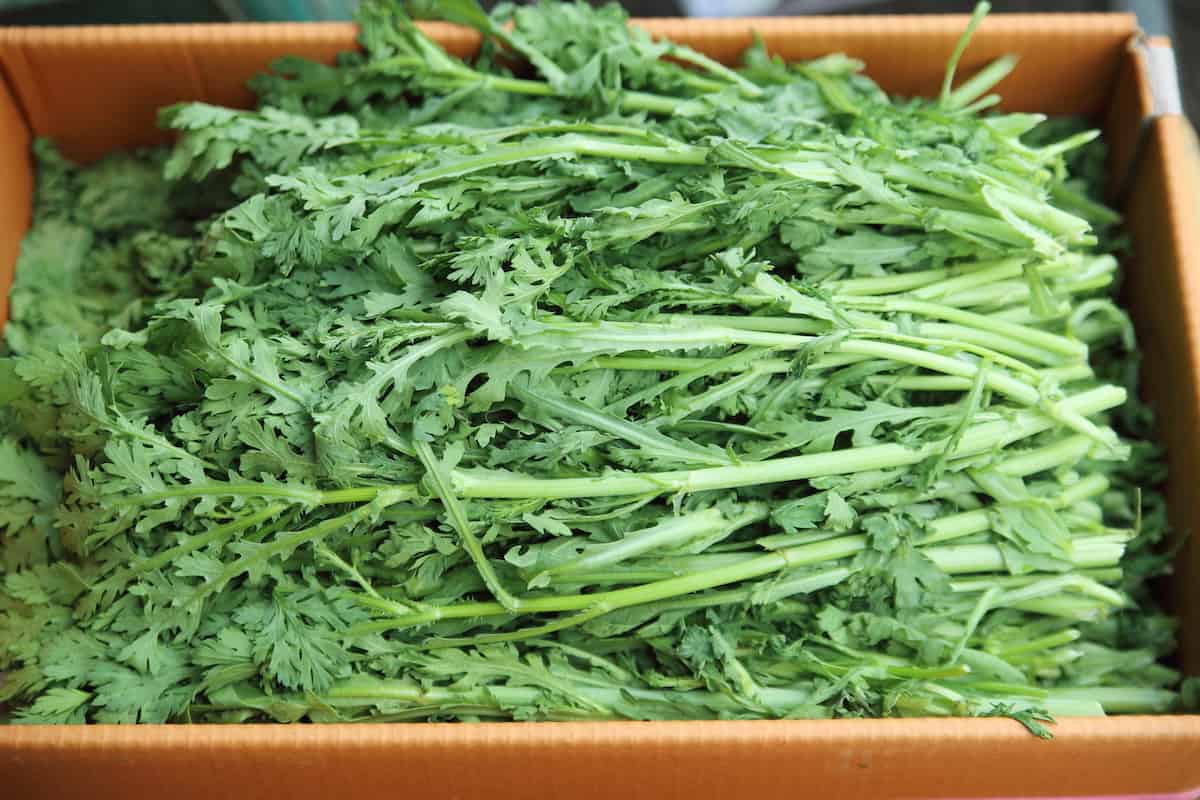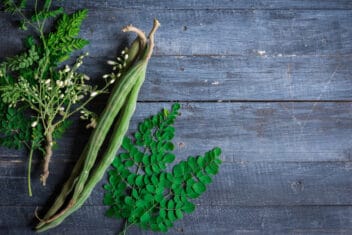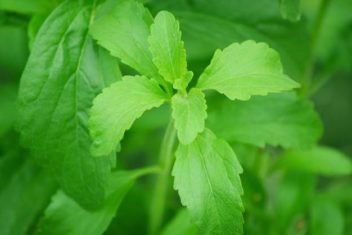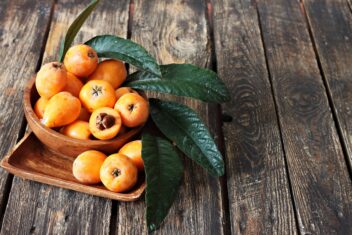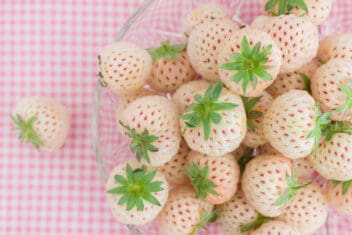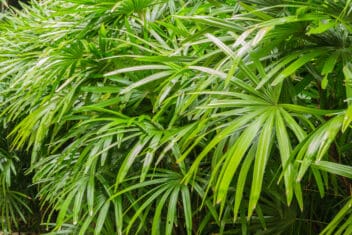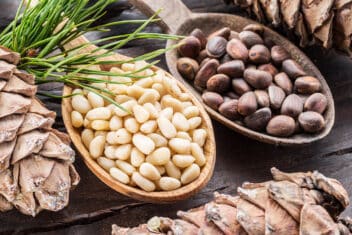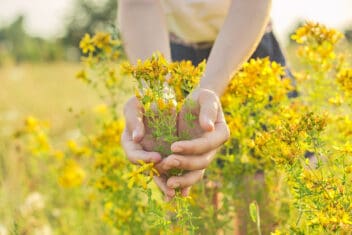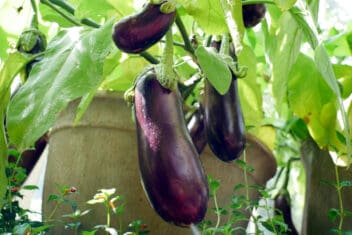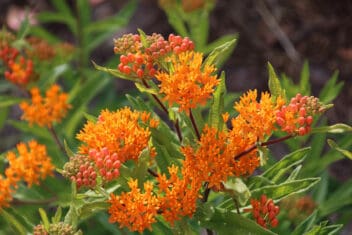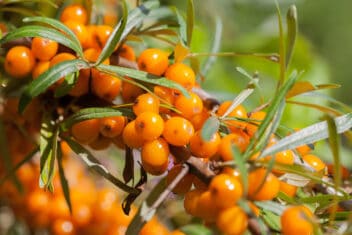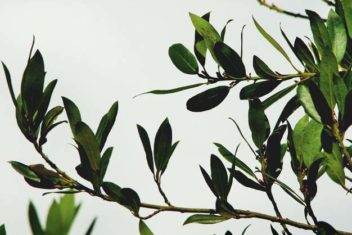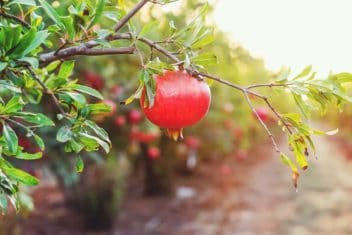Chrysanthemum greens (aka crown daisies) are available at many Asian markets, but they’re so delightfully simple to grow that you might as well be growing your own.
Plus, the greens you find at the market are usually large and mature, which means they’re best cooked. But when you grow your own, you can pluck the stems when they’re small and tender. You can even let the plant flower and eat those, as well.
If you want to learn more about growing this delicious plant, this article has all the information you need to succeed.
All About Chrysanthemum Greens
Glebionis coronaria (previously classified as Chrysanthemum coronarium) is part of the same family as the daisy flower. Unlike daisies, which can be found in the wild and cultivated in ornamental gardens, this plant is mostly grown for edible uses.
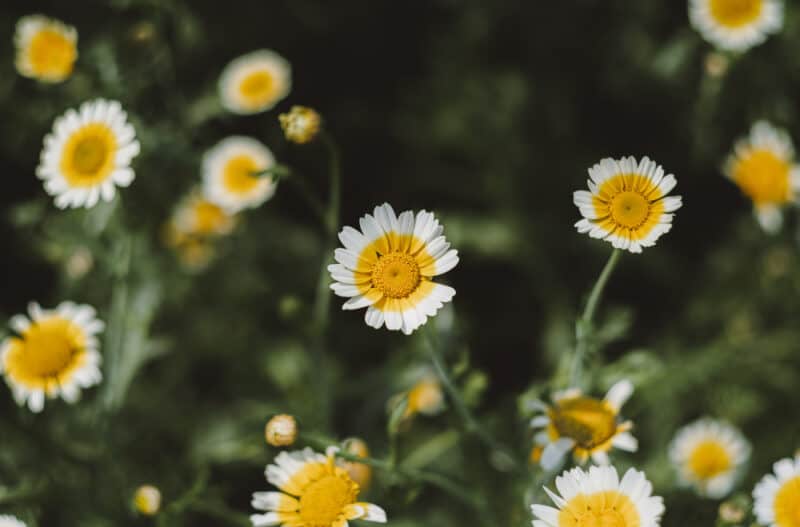
Crown daisies are found growing wild in the Mediterranian but are cultivated in East Asia. In Japanese, it’s called shungiku and in Cantonese, it’s called tung ho. You’ll see them labeled as chrysanthemum greens, garland chrysanthemum, edible chrysanthemum, or crown daisies.
You can find two different types of Glebionis coronaria: There is one that has flat leaves and one that has frilly leaves that resemble parsley.
These plants are incredibly hardy, which makes them a cinch to grow. They’re actually so tough that they’ve become invasive in some parts of California. If you live somewhere with a mild climate, you might want to try growing your crown daisies in a container so they don’t spread where you don’t want them.
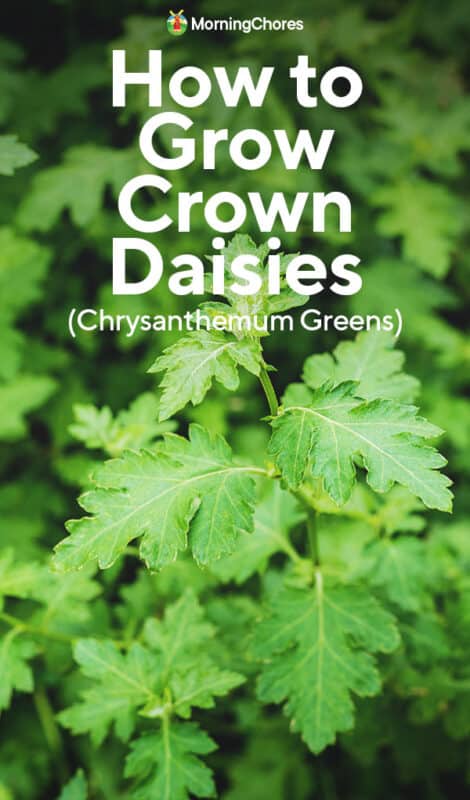
Planting Crown Daisies
Crown daisies are cool-season annuals and can grow in USDA Growing Zones 2-10.
Unless you have perfectly well-draining, rich, loamy soil naturally, prepare a spot for your plant by adding well-rotted compost to the earth. This improves drainage, loosens the soil, and adds nutrients. Remove any debris and stones that might be in the area.
Crown daisies do best growing in a space with full sun exposure, but some afternoon shade is welcome, especially in hot areas.
The plant needs to be able to mature when daytime temperatures are between 60-70°F. It can be colder when you first put your seeds in the ground. Although your plant can survive higher temperatures, if it’s too hot the plant will bolt. That means the best time of year to plant is early spring or autumn since these plants need up to three months to mature.
Sow the seeds six inches apart. You should start seeing the first signs of growth after seven days or so. This plant can grow quickly in the right conditions – up to eight inches in just one month! You can start harvesting about six weeks after planting.
If you have a long enough growing season, you can usually get in two plantings.
Caring for Edible Chrysanthemum
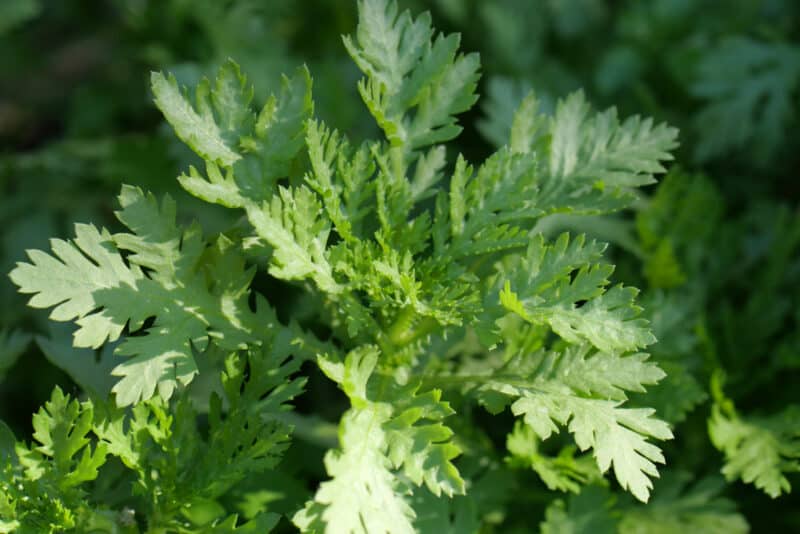
During the growing process, you should continuously water your crown daisies. It’s important that you don’t let them dry out. Once the surface of the soil feels dry, add water. An inch layer of compost around the base of the plant (but not touching it) can help retain water and suppress seeds.
The best way to remove weeds is by hand. You can do this by carefully pulling weeds out so you don’t damage the roots of the crown daisies.
Side dress with some well-rotted manure once a month to add nutrients.
Pull away any yellow leaves, but otherwise, you don’t need to do any additional maintenance.
Common Pests and Diseases
Just about the only thing you’ll have to deal with when growing crown daisies are slugs and snails. If you need some tips on how to get rid of this common garden foe, check out our guide.
Harvesting Crown Daisies
The most effective way to harvest this marvelous plant is the good old cut-and-come-again method. All you need is a pair of scissors and a container to hold your harvest. Use the scissors to cut a few stems at the base. Don’t take more than a fourth of the stems at a time.
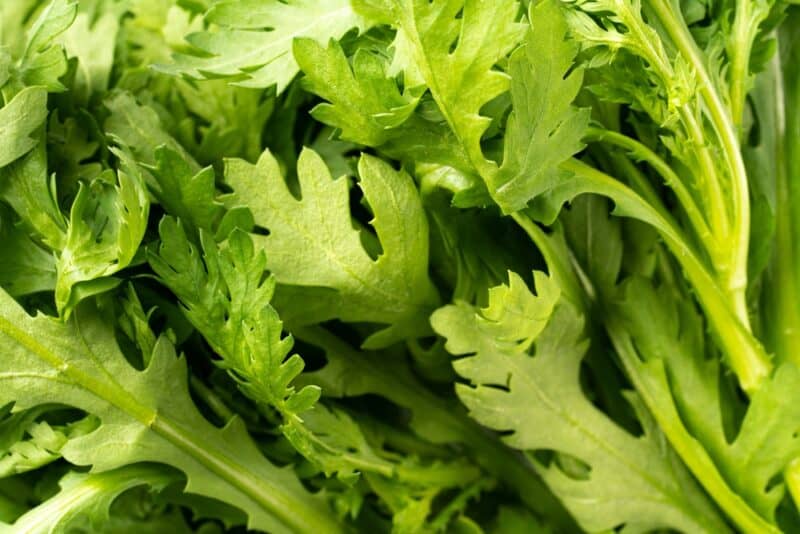
You can also cut the entire plant off at the base all at once using a sharp knife.
You should harvest the plant before it begins to flower, because once it does, the stems become tough. That said, if you want to use the blossoms, go ahead and take some of the greens and let the rest of the plant flower.
The flowers can either be eaten or dried. As soon as you harvest the leaves, use them right away. The stems wilt rapidly and lose their flavor.
Although, if you can’t eat them straight away you can always store them in your vegetable drawer in your refrigerator for up to two days as long as you wrap them in cling film. You should never store them in the freezer as this will ruin their texture and become soft.
How to Prepare Chrysanthemum Greens
The leaves and stems have a grassy flavor with a hint of bitterness and floral notes that work equally well in a salad or vegetable dish.
This leafy herb is perfect for cooking up some seriously delicious meals. If you’ve cooked with them before, then you know that the stems give off a wonderful aroma of pepper as they cook. You can also eat the young leaves and stems raw, so don’t feel constrained. Anything thinner than 1/8 inch is fair game for eating raw.
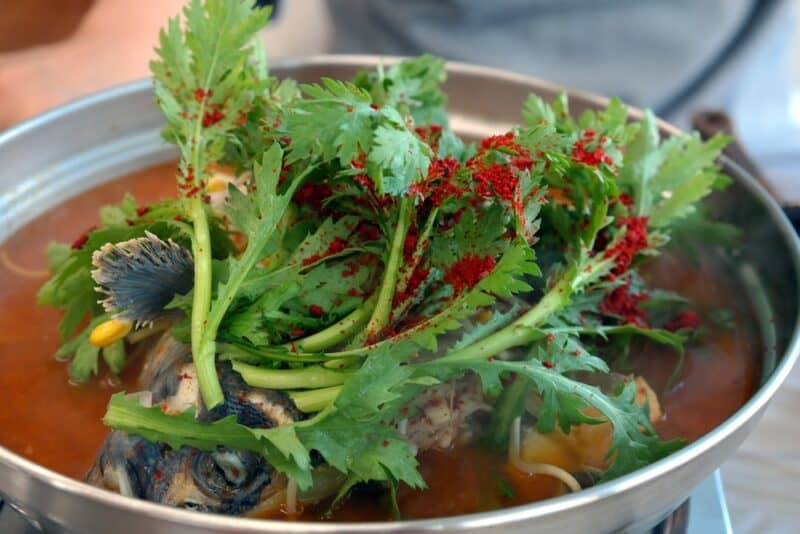
Prepare older or larger stems by stir-frying, parboiling, or blanching. You shouldn’t cook them for longer than a minute or so. If you overcook this herb then it will become too bitter and squishy to use and you’ll have to throw it away. Edible chrysanthemum is a classic addition to:
- Chop suey
- Stews
- Soups
- Udon
- Sukiyaki
In Japan, they’re often tossed with sesame dressing.
But don’t feel limited by tradition. You can always experiment with your own recipes using this herb. It can be tasty in salads, especially when mixed with other vegetables and microgreens.
Health Benefits
Crown daisies are rich in minerals and vitamins such as potassium. It also contains bioactive chemicals like Benzaldhyde and Alpha which can improve digestion.
This plant has chlorogenic acid which can also be found in coffee beans. While there needs to be much more research before you can rely on chrysanthemum greens to help you lose weight, there is evidence that chlorogenic acid helps slow down the release of glucose into your bloodstream.
Researchers published a study in the journal Nutrients that showed coffee rich in chlorogenic acid helped reduce abdominal fat in overweight adults.
Plus, the plant is low in calories. Tasty and low-calorie. What could be better?
This herb also is high in antioxidants which have been credited with all kinds of health benefits. Antioxidants help prevent heart disease, skin wrinkles, aging, and cancer. If you gently cook this herb or, better yet, eat it raw, it will preserve the antioxidants.
